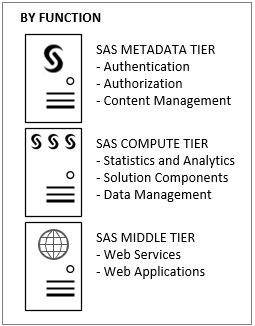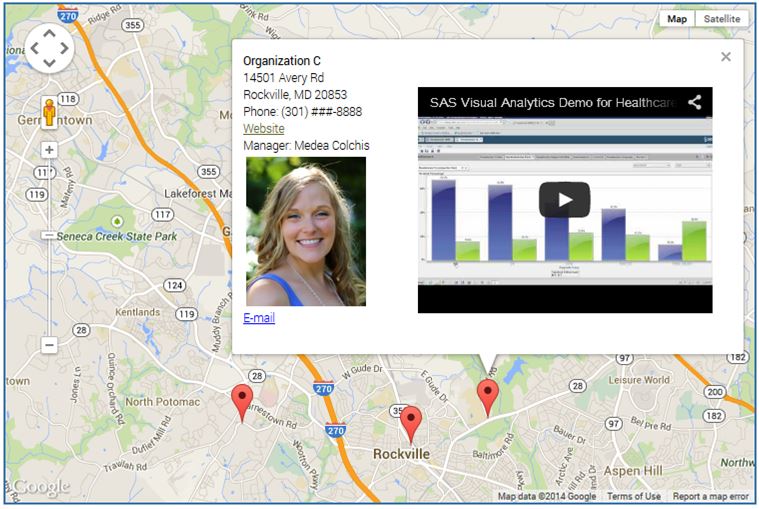All Posts

In the morning at 6am my iPhone buzzes. But it is not the alarm clock, rather it's important information from an app. What is this, I think to myself and look sleepily at the screen: "Danger of black ice! Already 15 km traffic jam on the A3 towards Cologne!

The energy & utilities industry as a whole has experienced a seismic shift over the past five years due to rising costs and price pressures, and has become a priority discussion on the political and media agenda. Falling demand overall combined with “peakier” peaks is making supply, forecasting and public

Scalability is the key objective of high-performance software solutions. “Scaling out” is a concept which is accomplished by throwing more server machines at a solution so that multiple processes can run in dedicated environments concurrently. This blog post will briefly touch on several scalability concepts that affect SAS.

Today, I'd like to introduce Celeste Cooper-Peel, the RFC's Wellness Supervisor. Celeste has been in the health and wellness field for twenty years. After receiving her Masters in Health Education from East Carolina University, she ventured into the mind/body world receiving training in Mindfulness-Based Stress Reduction and Yoga. Shortly after,

Imagine that you’re a large retail firm, in need of projecting sales for the next few months. With the right analytical solution, it can literally take just seconds to have a forecast in place. You drag and drop some variables and can figure out exactly which ones are underlying factors

Data-driven marketing is all about how marketers can harness data and analytics to create a more customer-centric, fact-based approach to customer engagement. This, combined with quality execution leads to better customer experiences and improved customer equity. However when looking at customer-brand interactions in silos such as in the call centre

Imagine this situation: You go to you doctor and tell her that "something hurts in the lower chest area." Now, based on this short description of your pain, you expect her to come up with a precise diagnosis and a specific therapy suggestion, including treatment time and associated cost. Sound

It’s my favorite time of the year, draft time! NFL and Fantasy Football fans, I don’t mean THAT draft, but similar. It’s what I will call the #SASGF15 draft! The time of year when the best and the brightest, the most knowledgeable, passionate, and inspirational SAS users submit ideas around

The Third PharmaSUG-China conference was held in Beijing last week, and I had the pleasure to attend this excellent conference along with a record number of attendees. On Thursday, I presented two 1/2 day seminars on ODS Graphics. One titled "Advanced Topics in GTL" and another titled "Complex Clinical Graphs
Recently, I was reading an online article about predictive modeling and "big data." Its premise was to determine whether the use of big data actually led to more accurate and meaningful predictive models and forecasts. After citing numerous external examples and internal tests that the authors had compiled, it stated

➤ DISCLOSURE! In June 2018 Google introduced changes to the way it handles its Maps platform. They now require API key in order to embed a map, plus Google Maps "projects" must now be associated with a billing account. Unless these new Google rules are met, Google maps described in
Often we need to plot the response values for binary cases of a classifier. The graph below is created to simulate one seen at http://www.people.vcu.edu/ web site of the shock index for subjects with or without a pulmonary embolism. In this case, the data is simulated for illustration purposes only. There
What does it take to be on the Huffington Post’s new B-team? Led by Arianna Huffington, this not-for-profit initiative is a group of global business leaders committed to making businesses more socially responsible - and blogging about it. It takes a real commitment to corporate culture, and not just the inspirational

We’ve all heard the tales about garlic protecting against evil and warding off vampires, but garlic is much more than an accessory to be worn around your neck at Halloween! Garlic provides numerous health benefits and is one of the most popular seasoning ingredients around. It goes well in almost

I’m sure, like me, you've been annoyed at being stuck in a traffic jam in a city centre somewhere, or been frustrated at your kids leaving lights on, or annoyed with the heating coming on when the weather’s warmed up and you've not got round to adjusting the thermostat. Now,













